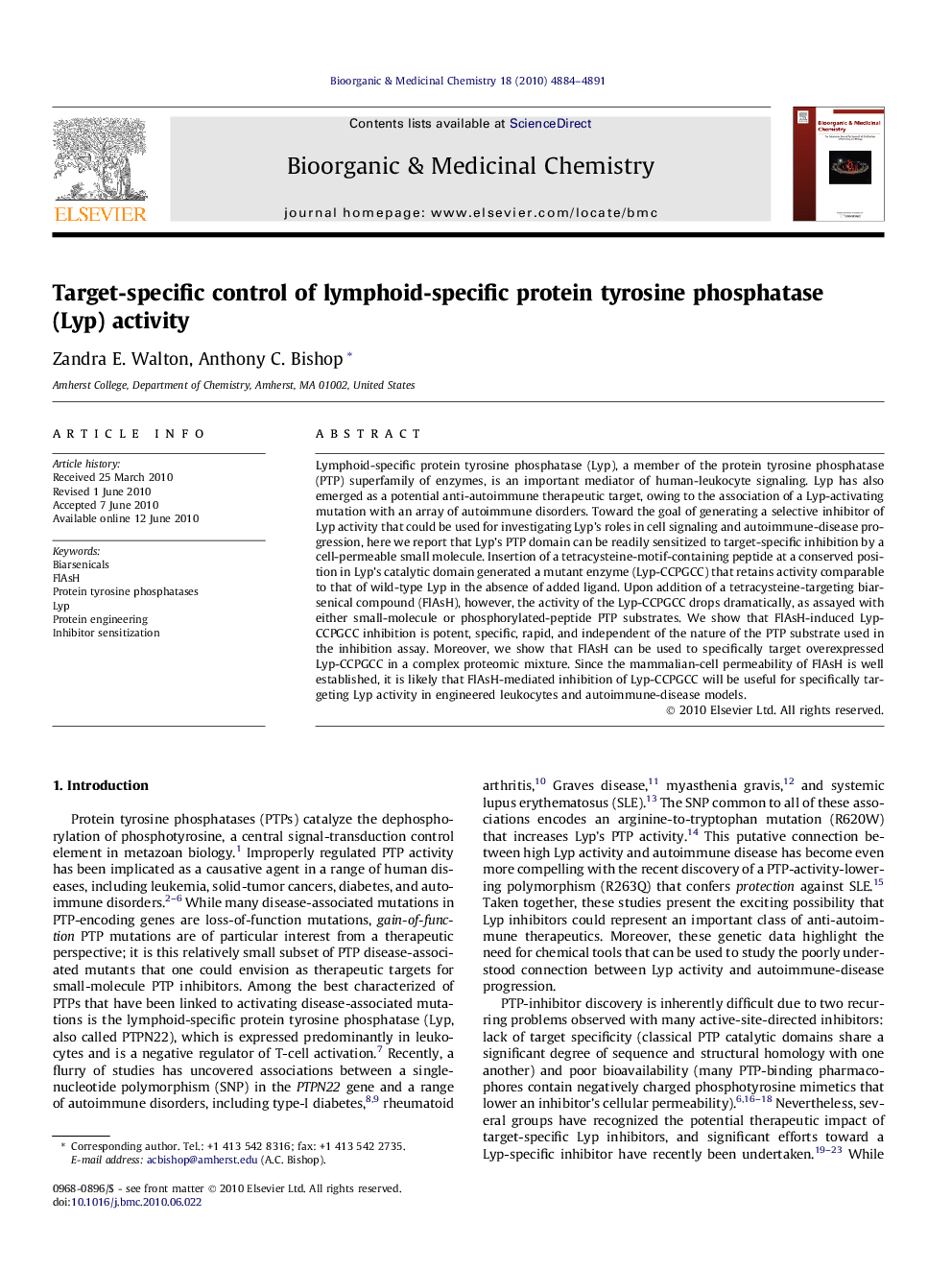| کد مقاله | کد نشریه | سال انتشار | مقاله انگلیسی | نسخه تمام متن |
|---|---|---|---|---|
| 10586068 | 981385 | 2010 | 8 صفحه PDF | دانلود رایگان |
عنوان انگلیسی مقاله ISI
Target-specific control of lymphoid-specific protein tyrosine phosphatase (Lyp) activity
دانلود مقاله + سفارش ترجمه
دانلود مقاله ISI انگلیسی
رایگان برای ایرانیان
کلمات کلیدی
موضوعات مرتبط
مهندسی و علوم پایه
شیمی
شیمی آلی
پیش نمایش صفحه اول مقاله

چکیده انگلیسی
Lymphoid-specific protein tyrosine phosphatase (Lyp), a member of the protein tyrosine phosphatase (PTP) superfamily of enzymes, is an important mediator of human-leukocyte signaling. Lyp has also emerged as a potential anti-autoimmune therapeutic target, owing to the association of a Lyp-activating mutation with an array of autoimmune disorders. Toward the goal of generating a selective inhibitor of Lyp activity that could be used for investigating Lyp's roles in cell signaling and autoimmune-disease progression, here we report that Lyp's PTP domain can be readily sensitized to target-specific inhibition by a cell-permeable small molecule. Insertion of a tetracysteine-motif-containing peptide at a conserved position in Lyp's catalytic domain generated a mutant enzyme (Lyp-CCPGCC) that retains activity comparable to that of wild-type Lyp in the absence of added ligand. Upon addition of a tetracysteine-targeting biarsenical compound (FlAsH), however, the activity of the Lyp-CCPGCC drops dramatically, as assayed with either small-molecule or phosphorylated-peptide PTP substrates. We show that FlAsH-induced Lyp-CCPGCC inhibition is potent, specific, rapid, and independent of the nature of the PTP substrate used in the inhibition assay. Moreover, we show that FlAsH can be used to specifically target overexpressed Lyp-CCPGCC in a complex proteomic mixture. Since the mammalian-cell permeability of FlAsH is well established, it is likely that FlAsH-mediated inhibition of Lyp-CCPGCC will be useful for specifically targeting Lyp activity in engineered leukocytes and autoimmune-disease models.
ناشر
Database: Elsevier - ScienceDirect (ساینس دایرکت)
Journal: Bioorganic & Medicinal Chemistry - Volume 18, Issue 14, 15 July 2010, Pages 4884-4891
Journal: Bioorganic & Medicinal Chemistry - Volume 18, Issue 14, 15 July 2010, Pages 4884-4891
نویسندگان
Zandra E. Walton, Anthony C. Bishop,